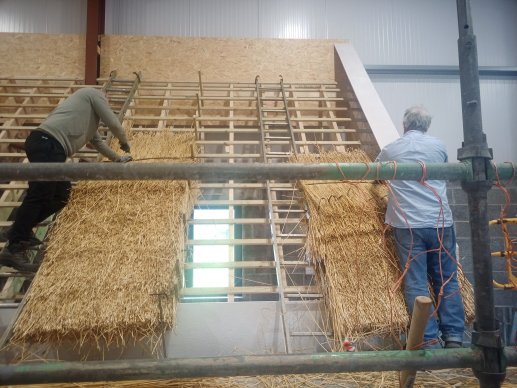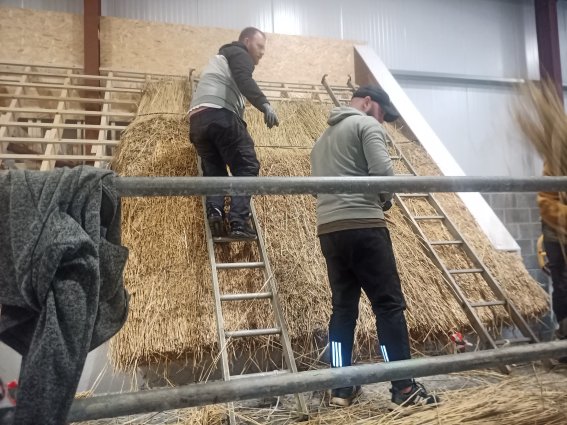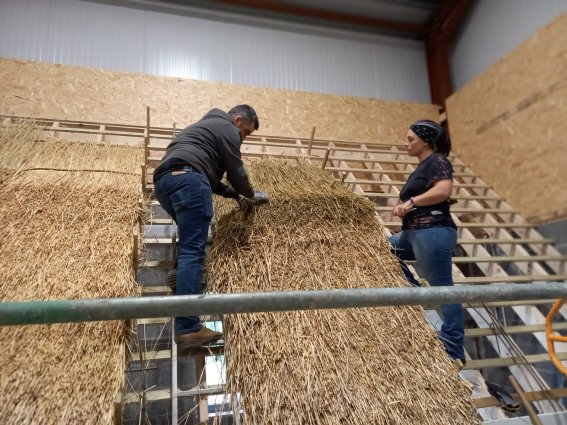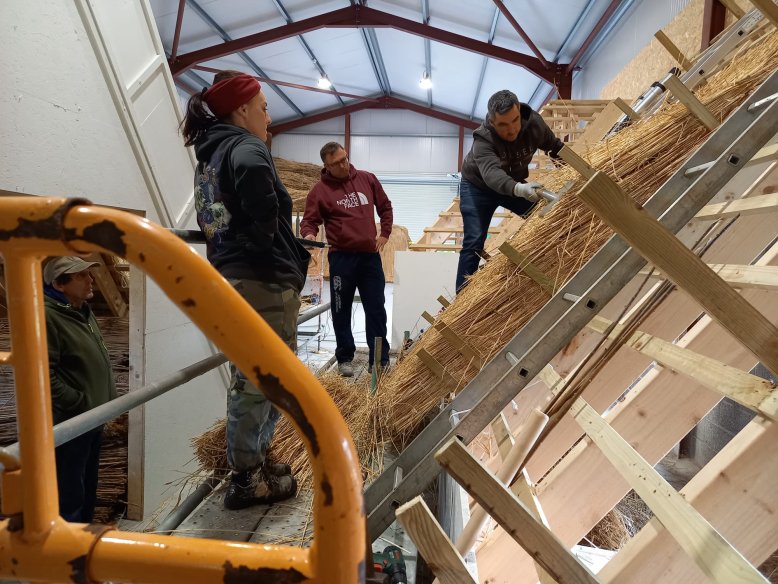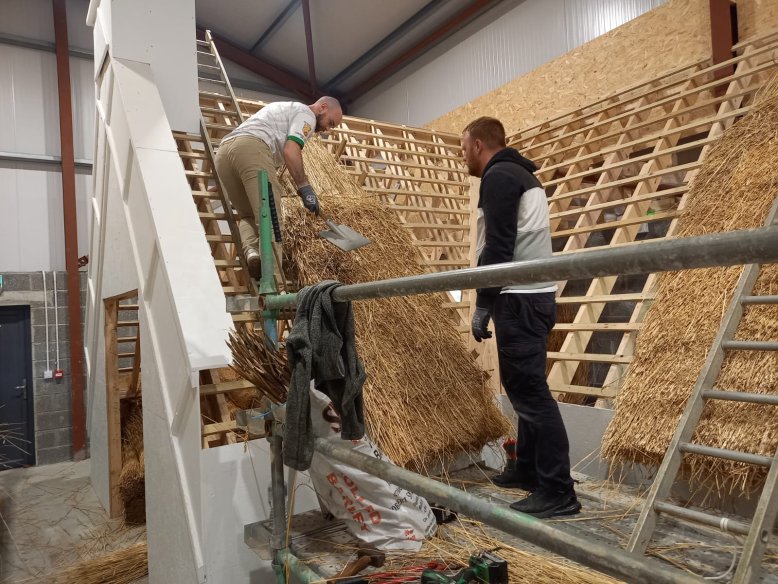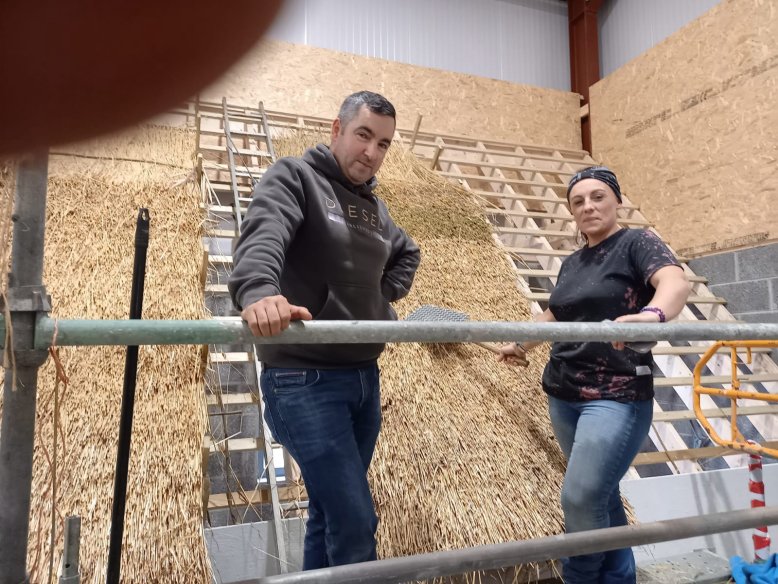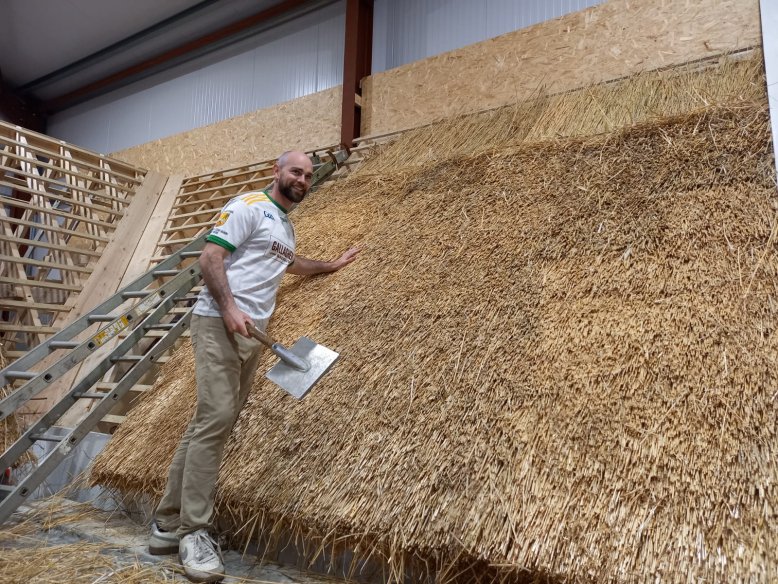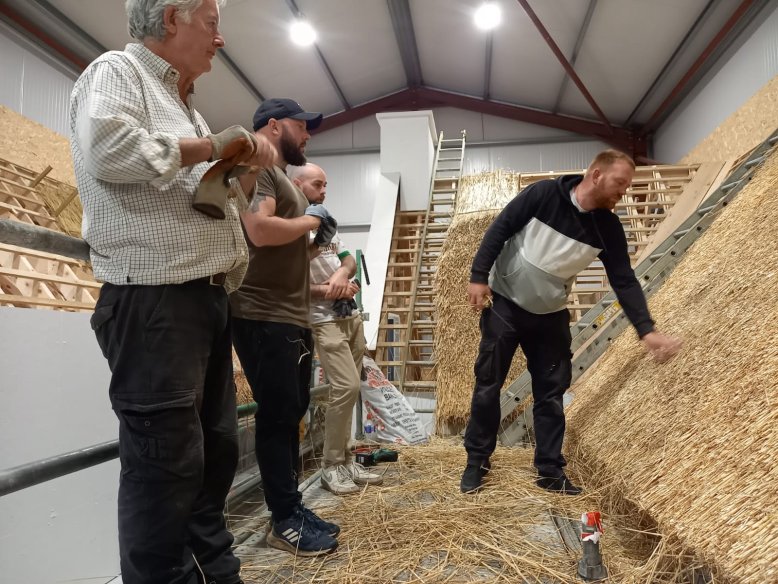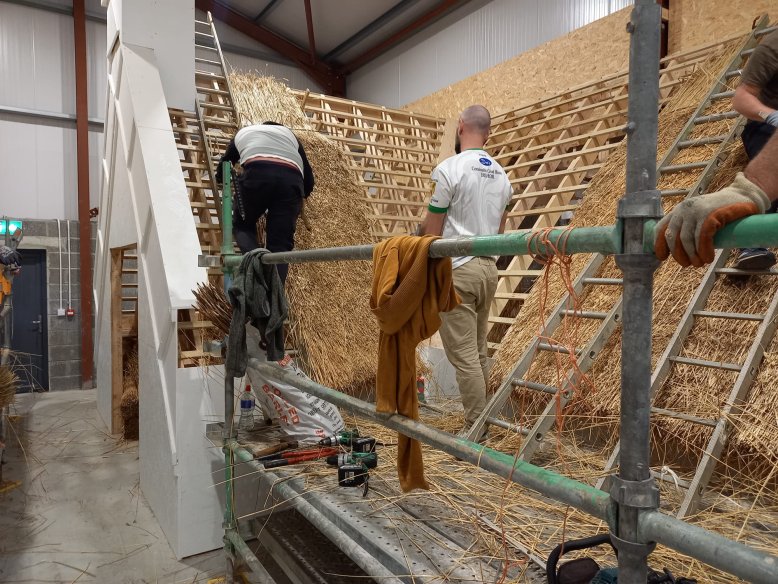2 day Straw thatching event
5 Trainees being tutored by James Kilpatrick
A short video tour
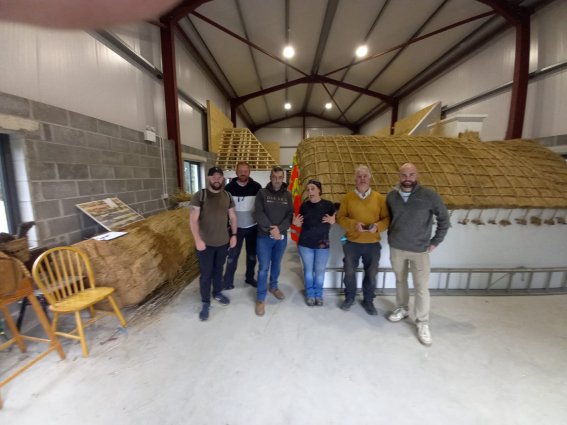
The Group
From left to right: Shaun McGinty, James Kilpatrick, Francis Boyle, Fidelma Toland, John Sweeney, Joseph Sweeney. Sean Cunningham also attended.
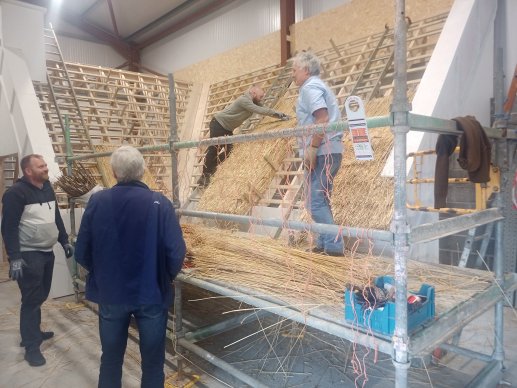
Instruction
James Kilpatrick keeps a watchful eye and offers a word of encouragement to the lads on the scaffold
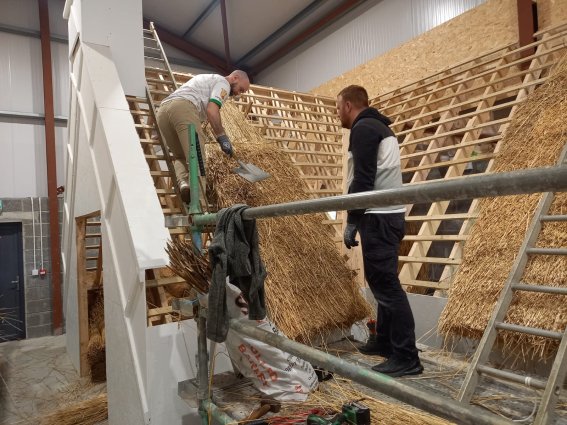
Sunday
Francis Boyle joins the group on day 2, with James instructing.

On the other scaffold
The work begins with trainees combining to hold, place, and fix the rows of straw onto the roof.
